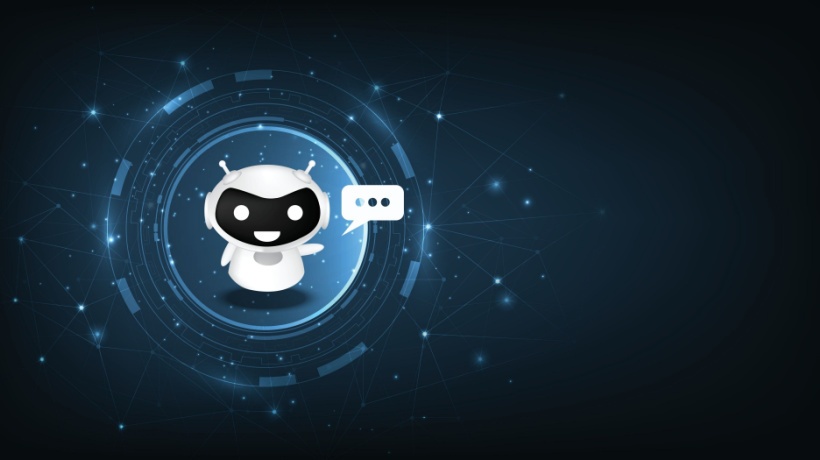Mastering The Fundamentals: What Teachers Need To Know To Use Chatbots In STEM
Chatbots are popping up more in classrooms as helpful teaching tools. But simply throwing a chatbot into your lesson plan won't guarantee success; teachers need to develop certain key skills to use them effectively. A recent study by Maja Kerneža, "Fundamental and Basic Cognitive Skills Required for Teachers to Effectively Use Chatbots in Education," investigated the fundamental and cognitive abilities required of teachers when designing science, technology, engineering, and math (STEM) lessons using educational chatbots.
A total of 58 preservice teachers enrolled in an elementary education program participated in the research. As part of their coursework, participants were tasked with creating an original STEM lesson plan for one of the four disciplines (science, technology, engineering, or math) with the assistance of the popular GPT3 chatbot. Their lesson plans and chatbot interactions were then reviewed by researchers to identify the key skills demonstrated during the activity. Participants also self-assessed their own fundamental and cognitive skills related to chatbot-assisted lesson planning through a questionnaire. Through analysis of the pilot study interactions and initial lesson plans, nine fundamental skills and eight cognitive skills essential for chatbot work were determined.
9 Fundamental Skills Required To Use Chatbots In STEM Classrooms
1. Ability To Recognize And Troubleshoot Issues
It's important to pay attention when the chatbot doesn't seem to understand your question fully or gives an answer that doesn't seem quite right. When this happens, you'll need to think about why it might be confused and look for solutions to help clear things up. Maybe the question needs rephrasing, or you need to provide more details. Or maybe there's a small bug in the program that just needs reporting so the programmers can fix it. Taking time to notice problems and try to resolve them helps make chatting with bots better.
2. Abstract Thinking
Using your imagination and thinking outside the box are helpful for getting the most out of chatting. A chatbot can only respond based on its programming, but humans can make connections between different ideas and concepts. Looking at things from different angles or applying them to new scenarios lets you explore topics more deeply. It also aids in finding patterns, analyzing information and coming up with creative solutions when answers aren't straightforward.
3. Awareness That Chatbots Are Capable Of Learning
It's good to keep in mind that although a chatbot's knowledge is limited now, it has the ability to become smarter over time. As you interact with it, the data it collects from your conversations gets added to its training. With more experiences to learn from, the program gradually improves at understanding language, remembering information, and carrying on natural discussions. Recognizing a bot as a work in progress that will continue evolving makes chatting a learning experience for both you and the Artificial Intelligence (AI).
4. Creativity
Don't forget chatbots have boundaries since they're restricted to their code. So when answers start repeating or seeming dull, thinking outside the box can help reinvent the conversation. Come up with hypothetical scenarios to discuss, or approach topics from a more imaginative angle. Posing open-ended what-if questions allows a bot's responses to surprise you instead of it just responding predictably. Getting inventive aids discovery and prevents talks from growing stale.
5. Incorporating Knowledge From Diverse Fields
Chatbots draw responses from their stored databases, which may cover an array of different subjects. But since robots have no expertise in any one area like people do, answers relating to specific contexts can miss important nuances. It's good to provide background context for more specialized questions. Explaining technical terms, historical references, or cultural aspects helps narrow responses to provide accurate details. Broad general knowledge aids truly informed discussion.
6. Language Skills Of The Individual
Communication is key for any interaction, whether with other people or technology. Using clear wording anyone can easily grasp promotes understanding on both ends. Asking follow up questions when needed helps fill in gaps. Friendly speaking encourages continued conversation. Overall, focusing on making meaning and information readily accessible creates positive chatting experiences.
7. Recognition And Understanding Of The Language Limitations Of The Chatbot
Realizing a chatbot has a limited programmed understanding of grammar, words, and expressions prevents frustration. Bots may not get slang, complex phrasing, implied meanings, or cultural idioms. Being aware of potential shortcomings helps frame expectations reasonably, without getting annoyed by the inevitable stumbles. Patience and rewording queries works best for productive discussion within software restrictions.
8. Understanding Concepts
Taking the time to fully comprehend what's being discussed, why it matters, and how everything ties together allows for riding the conversational flow. Asking for definitions or examples to clarify fuzzy points keeps exchanges informative. Similarly, recognizing an agent's purpose as answering questions instead of casual chatting steers topics fruitfully. Comprehension aids in extracting meaning and value from talks.
9. Understanding The Logic And Programming Of Chatbots
At their core, chatbots are computer programs designed to respond based on algorithms and training. Getting a basic idea of how these systems function internally can provide insight for interactions. Realizing responses follow logical patterns and knowing what the software aims to do better prepares users to engage helpfully within technical boundaries. Like any relationship, familiarity fosters smoother communication.
8 Cognitive Skills To Help With Chatbot Use For Education
1. Attention To Detail
It's important to focus carefully on all aspects of the conversation when chatting with an AI. Listen actively to fully comprehend what information is being shared. Watch for important details, facts, names, or concepts that provide context. Don't space out or multitask, as something insightful could be missed. Paying close attention ensures no nuances slip by unintentionally.
2. Comprehension
Understanding is key to truly connecting during a discussion. Make sure to actively think about the meaning behind the words used rather than just passively listening. Seek clarity as needed by paraphrasing back in your own terms. Analyze the bigger picture and the implications of what's said. You can then think more deeply about the topic and know that you've interpreted things accurately by putting it in your own words.
3. Critical Thinking
To get the most value from an exchange, judge responses judiciously, rather than just accepting everything at face value. Think critically about whether the answers address the original questions, include all pertinent factors, and seem logically valid and supported by evidence. Know it's alright to respectfully point out any oversights, inconsistencies, or the need for more thorough explanations. This helps to optimize the quality of information shared.
4. Cultural Competence
Be mindful that different cultures may have diverse ways of thinking and traditions that shape perspectives. Stay thoughtful and open-minded about cultural identities discussed with emotional intelligence and respect. Show willingness to learn from differing worldviews. Asking politely for clarification instead of going with assumptions can expand mutual understanding across identities.
5. Emotional Intelligence
Strong communication involves recognizing feelings beneath the surface. Notice if an AI expresses or implies emotion in its responses. Then respond in a caring, helpful manner. Also be aware that certain topic sensitivities may bring up personal emotions. Remain calm and work through them constructively. Handling discussions empathetically fosters productive connection.
6. Logical Reasoning
Methodical thinking allows the making of well-informed inferences. Analyze details logically rather than impulsively from the chatbot's perspective to fully comprehend implications. Then use rational assessment to interpret significance and draw your own considered conclusions. Question internally whether the deductions seem to follow a sound process of inductive and deductive steps.
7. Memory
Recalling key points over time enriches discussions. Jog your memory for any relevant facts, figures, anecdotes, or analyses previously exchanged that could provide useful reference. Help maintain the natural flow of conversation by occasionally checking in on past topics or questions to see how understanding has developed.
8. Problem-Solving
When issues arise, flexibly approach them through new lenses. If the answers seem inadequate, reframing the question may generate fresh insight. Brainstorm alternative perspectives to consider. Be ready to adapt communication strategies diplomatically to overcome obstacles through cooperative solutions.
With deliberate practice of these nine fundamentals, chatbots could empower interactive, hands-on learning in your STEM classroom!









